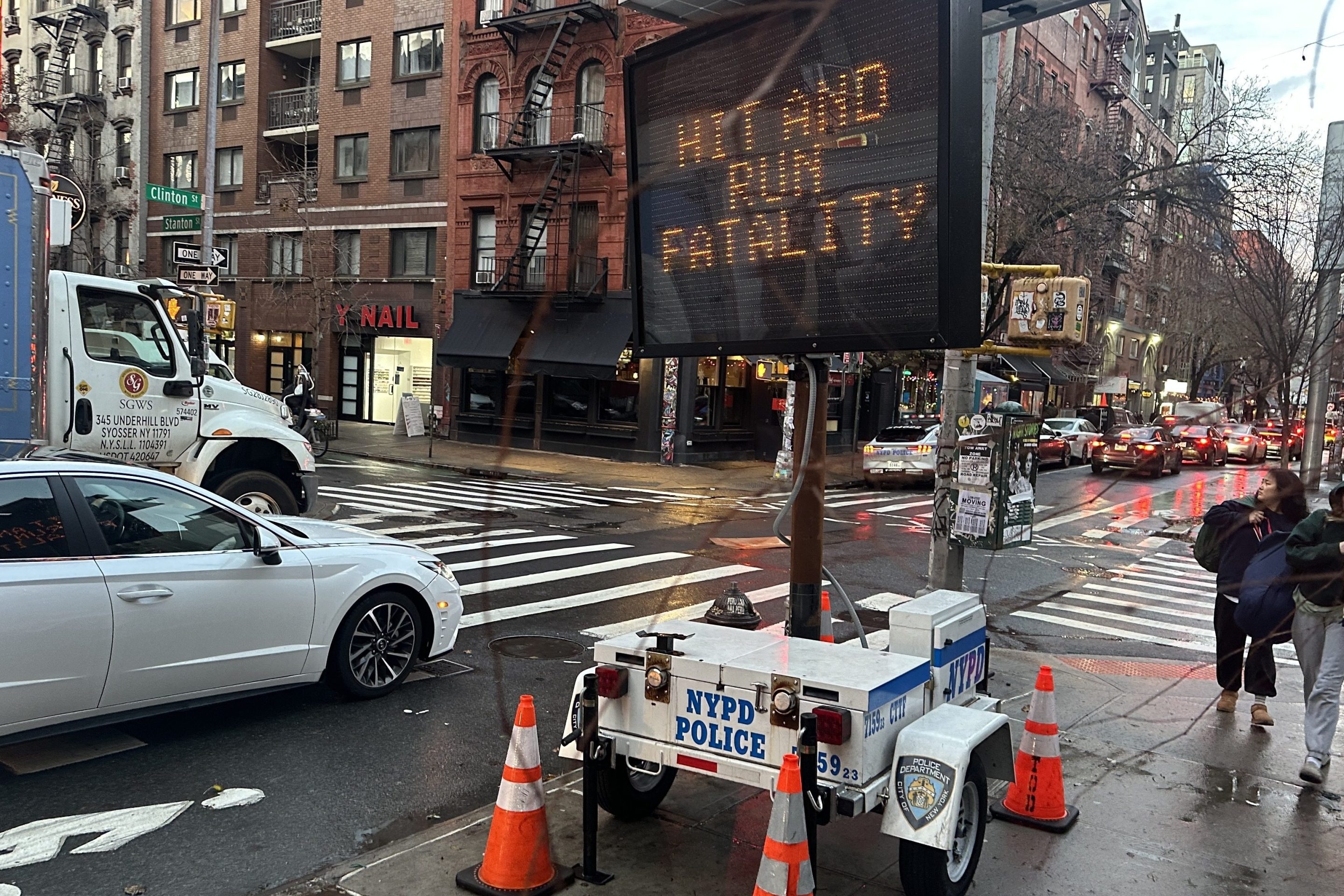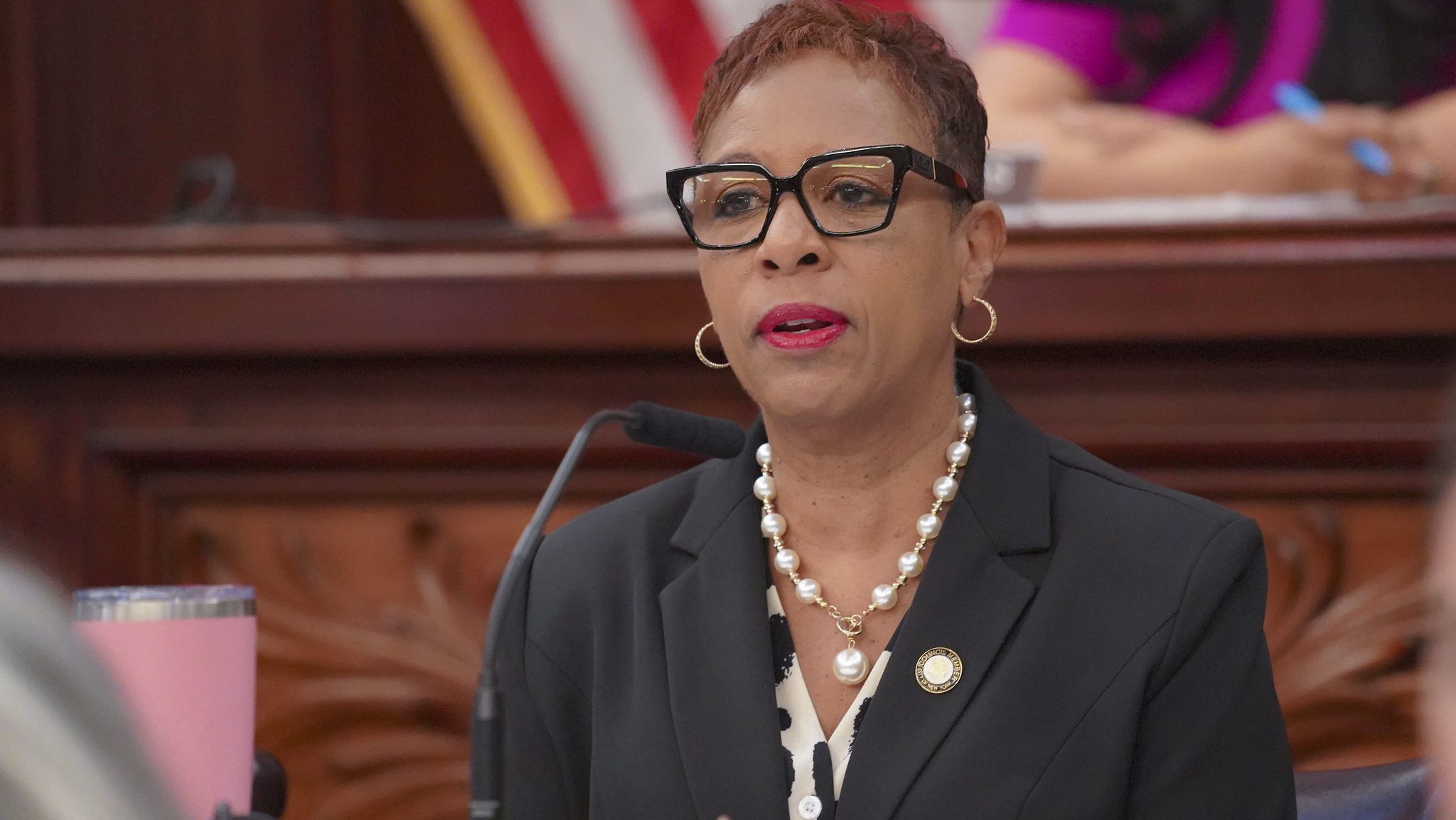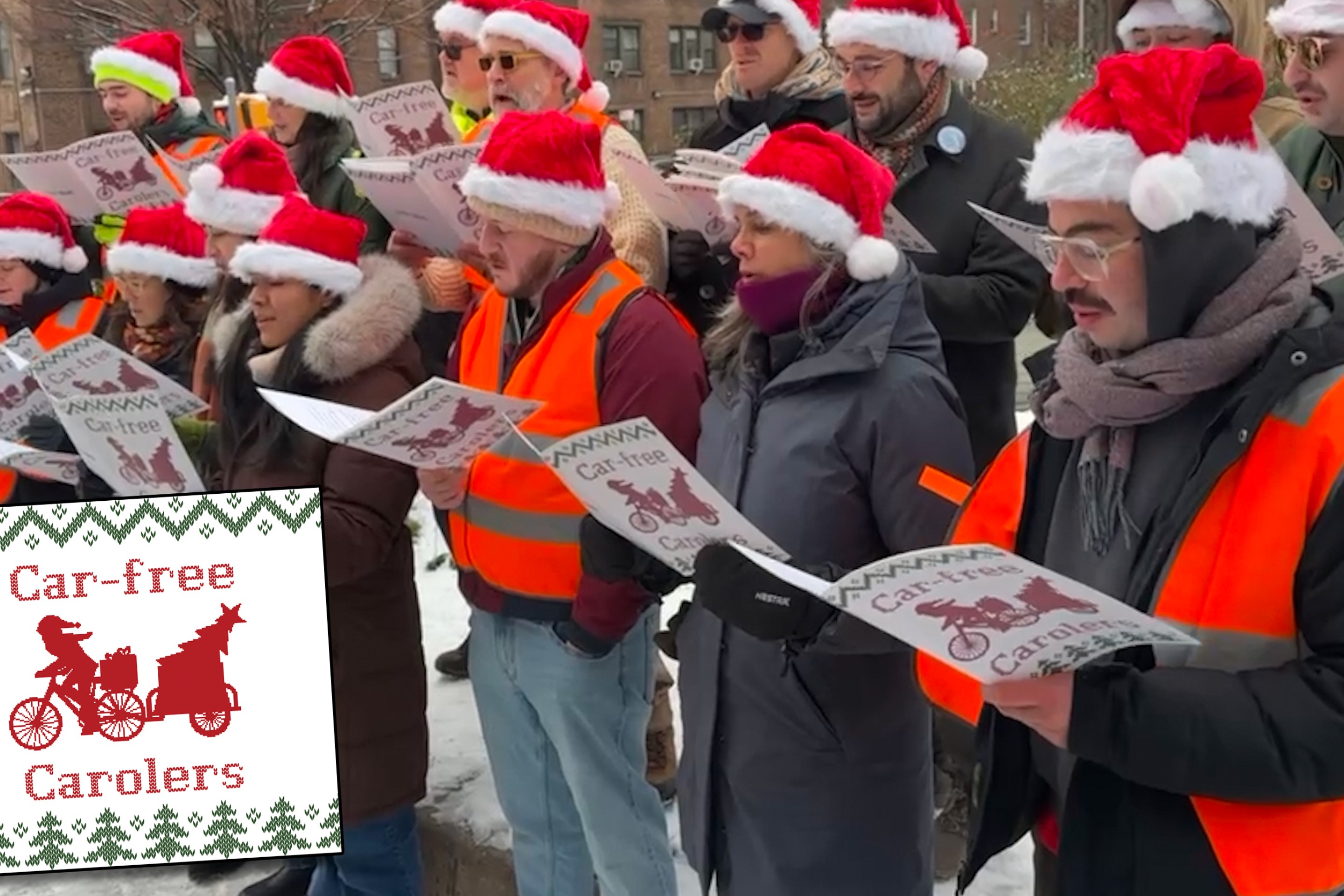
A map of the area near Washington, D.C.'s new ballpark. Streets with variable-rate or permit parking are in color.
After calling attention last month to the traffic-reducing power of parking reform, Transportation Alternatives has released a follow-up report with a parking prescription for New York. "Pricing the Curb" [PDF] looks to innovative programs underway in Washington D.C., San Francisco, and Chicago for inspiration. With DOT taking steps toward setting variable-rate prices for curbside parking -- which it calls "peak rate parking" -- the report urges the Bloomberg administration to go further. A full-featured parking policy is one way the city can take on traffic without Albany's approval.
There's a lot of good ideas here. For instance, to win public support for curbside prices that will actually achieve vacancy targets (the higher the price, the more spots remain open), T.A. highlights D.C.'s practice of using parking revenue to fund a menu of livable streets improvements, which has won over skeptics. As DOT engages community boards in the development of pilot programs for peak rate parking, a similar solution here could help prevent prices from being watered down.
T.A. also has some advice for the Department of City Planning. While DCP has put few checks on the proliferation of public parking facilities attached to new residential construction, the report notes that San Francisco is specifically targeting off-street parking in its reform effort.
Another highlight: On page 15 there's a reprint of T.A.'s interview with D.C. council member Tommy Wells, who has made livable streets issues a central part of his platform.
The full text of T.A.'s five main recommendations comes after the jump.
- Raise curbside meter prices and employ variable pricing in key areas Metering should be viewed as a tool to reduce double parking and cruisingfor parking. Premium curbside parking in the Manhattan Central BusinessDistrict and adjoining neighborhoods is ten to fifteen times cheaper thanoff-street parking. In contrast, Chicago and San Francisco are introducinghigher meter prices on thousands of meters in their central neighborhoods,and increasing meter hours. New York City business, planning andenvironmental groups recommend that the same should be done here.
- Buy more Muni-Meters and try new parking technology Modern meters are cheaper to maintain, more reliable, raise more moneyand are better at busting traffic congestion. San Francisco and Chicago areinvesting millions in state of the art parking meters, and electronic sensorswhich monitor curbside occupancy and automatically adjust parking rates.Meanwhile, New York City has a severe shortage of popular Muni-Meters,and has few meters capable of accepting credit cards.
- Set meter rates citywide based on curbside vacancy, not politics All three cities in this study are using vacancy targets to determine theirmeter prices. This means they are raising and lowering their meter rates sothat at least one parking spot per block is always available. This practiceeliminates most double parking and cruising traffic. In contrast, NYC meterrates vary widely depending on the community board and local politics.
- Reinvest parking revenue in neighborhood transit, cycling and walking Washington D.C. has created an innovative program to return the revenuefrom higher parking meter rates to neighborhood streetscape, bus,pedestrian and cycling projects. This has turned neighborhood skepticsinto supporters of parking reform. Can you think of a few places that needsidewalk repair or better bike infrastructure in New York City? This type ofreform could pay for it.
- Monitor, enforce and cap off-street parking San Francisco recognizes that more off-street parking means more driving.The city is "unbundling" the cost of parking from new residences, reducingor eliminating requirements for building parking near transit and exploringride sharing as a way to reduce car ownership and use. In contrast, NYC CityPlanning, which is responsible for setting off-street parking requirements,does not know how much off-street parking there is, how much will bebuilt, or how much traffic that parking will generate. New York City shoulddevelop a complete inventory of curbside and off-street parking for everyborough, and measure the amount of traffic created by that parking. Mostimportantly, New York City needs to establish goals for the amount ofparking it wants based on environmental and traffic targets.
Image: DDOT





